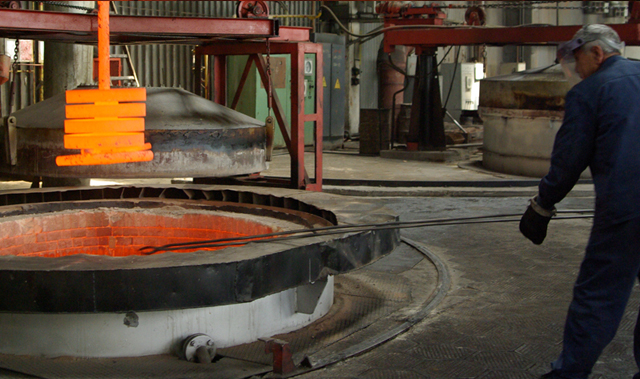
In machine building, thermal treatment is in most cases required in order to obtain the targeted mechanical properties of metal for most of the manufactured parts. Thermal treatment is a process that consists of a series of heating operations, whereby metals and alloys are equalized and cooled. The purpose of metalworking is to change the structure and properties as desired for a given purpose. For these tasks, the thermal treatment shop is equipped with large and powerful electric furnaces that can heat a three ton load to a temperature of 900 degrees.
Technological capabilities
Types of thermal treatment:
Normalization
- to equalize metal structure.
Annealing
- removes partly (or in all) any heterogeneities, which were impregnated into the metal during preceding operations (mechanical treatment, pressure processing, casting, welding), improves the structure of steel, relieves a stress, reduces hardness
- Is carried out by heating of workpieces above the critical point, equalizing under that temperature and rapid cooling. Tempering is the main type of metal thermal treatment, and is used to increase metal hardness, wear resistance and durability. Correct choice of tempering mode (heating temperature, equalizing time and cooling rate) provides tempering quality.
- The process of high-temperature carbon saturation of the steel-environment interface. Carbonization of steel products surfaces to increase their hardness and resistance to abrasion. The process is carried out by heating of products by natural gas at 930 ... 950°C. Carbonization quality is assessed by effective thickness of the carburized layer, which is determined by one of two indicators - hardness and layer structure (depth - 0.5 ... 2 mm).
Thermal-treating equipment: